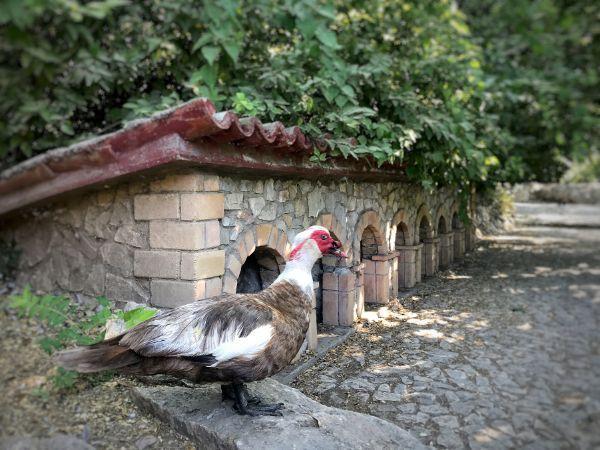
In a city that has a serious lack of green space, the National Garden of Athens may be regarded as a much-coveted haven for the bustle-afflicted residents of the Greek capital city. In contrast with most of Athens’ parkland, which is hilly and in a wild natural state, the National Garden is one of the city’s few flat and planned parks of significant size. Its easy accessibility by public transport, as well as its great vicinity to many of the city’s most important historical sights, renders it a favorite recreation area for residents and tourists alike. It would rarely be omitted from the to-see list of any visitor to Athens.
It remains in my memory like no other park I have known. It is the quintessence of a park, the thing one feels sometimes in looking at a canvas or dreaming of a place one would like to be in and never finds.
Henry Miller writing on the National Garden of Athens in 1939
Contents
Quick Facts
- Area: 0.155 km2, 0.059 mi2, 15.5 hectares, 38 acres
- Created: 1840
- Coordinates: 37.9734, 23.7373
- Nearest Metro Station: Syntagma Square
- Admission Fee: None
- Opening Times: Sunrise to sunset, all year round
- Facilities/Sights: Cafe, Children’s Library, Playground, Zoo, Duck Pond, Botanical Museum, Archeological Ruins, Statues, Picnic Areas
History
In antiquity, the area where the National Garden is today was a private garden belonging to the philosopher and botanologist Theophrastos, one of Aristotle’s intellectual heirs. It was donated to him by his student Dimitrios Phalireas. A shrine and a library were to be found inside the garden at the time.
Originally known as the Royal Garden, the park was commissioned by Queen Amalia of Greece in 1838 to be created beside the then Royal Palace (today the National Parliament of Greece). It was designed by a German agronomist named Friedrich Schmidt. More than 500 species of plants were imported to populate the park; of which many didn’t make it in the Greek climate. A diversity of exotic animals was also introduced in the park. It was completed by 1840.
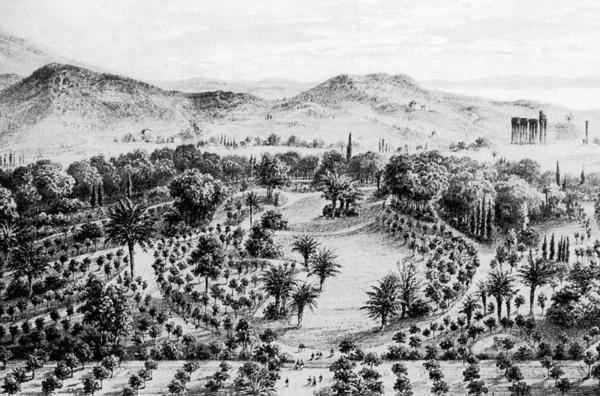
During its royal era, a part of the garden was fenced off and reserved as a private haven for the king’s family. The rest of the garden was open to the public only in the afternoon hours.
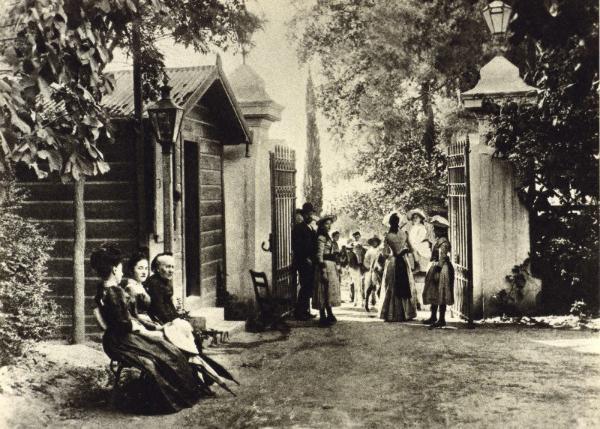
On September 30th 1920, King Alexander was bitten in the garden by a monkey. He succumbed to sepsis three weeks later. His unanticipated death was followed by the restoration of his deposed father King Constantine I, the ousting of Prime Minister Venizelos, and the broad reshuffling of the country’s military leadership; events that ultimately led to the Asia-Minor Disaster of 1922. Commenting on this bizarre sequence of events, Winston Churchill wrote:
It is perhaps no exaggeration to remark that a quarter of a million persons died of this monkey’s bite.
Winston Churchill
Following these events, upon the first abolition of the Greek Monarchy in 1927, the park was renamed to National Garden and was opened to the public from sunrise to sunset. The main entrance was moved to the spot where Queen Amalia had planted herself 12 whasingtonia palm trees and the street in front of it was renamed to Queen Amalia Avenue. The garden remains in that state until the current day.
In 2004, the jurisdiction of the National Garden was passed by the Greek State to the Municipality of Athens for 90 years.
How to get there
The National Garden of Athens is situated near Syntagma Square Metro Station. Facing the Parliament across the square, turn left on Vassilissis Amalias Avenue. The garden begins right after the southern side of the parliament building. You will encounter the main entrance after a hundred meters’ walk. The main entrance’s coordinates are: 37.9739, 23.7355.
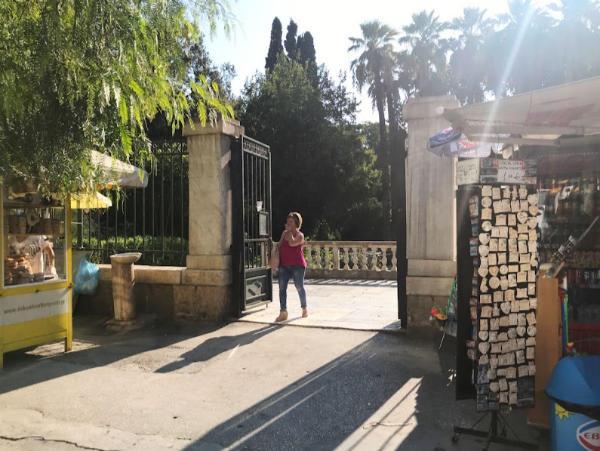
There is a total of 8 additional entrances to the National Garden. One more is located on Vassilissis Amalias Avenue, 200 m south from the main entrance; four at the south side, on the street between the National Garden and Zappeion Park; two at the east side, on Irodou Attikou Street; and one at the north side, on Vasilissis Sofias Avenue.
Cost
There is no entrance fee to enter and remain in the National Gardens of Athens. Anyone is free to walk in at any time during opening hours.
National Garden Opening Hours
The National Garden of Athens is open all year round from sunrise to sunset. It is the only public park of Athens that closes during the night hours; probably to prevent homeless people from settling in it, as is common in many other parks of Athens.
Description
The National Garden of Athens occupies an area of 0.155 km2. It features about 7 km of walking paths one can utilize for a pleasant stroll or a jog, and many benches and pergolas where one can sit to read a book, have a chat, or just watch the passing-by people.
It hosts some 7.000 trees, 40.000 bushes, and other plants which keep the entire park in constant shade. These belong to more than 500 diverse species. About a fifth of them are endemic, with neria, carobs, and judas-trees (Cercis Siliquastrum) being some of the most abundant. Some of the most prominent imported species are the Australian eucalypti and casuarinas and the Chinese trees of heaven (Ailanthus Altissima).
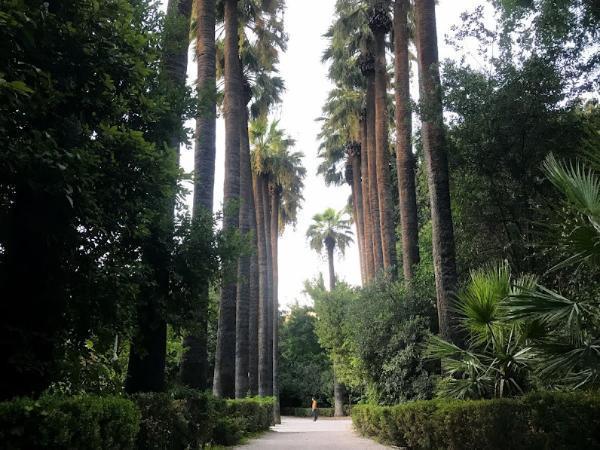
The garden features a total of 6 ponds. It is a cherished activity of many Athenians to feed crumbs to the ducks that inhabit those ponds. A smaller pond hosts a group of small turtles. The garden also contains a zoo that is largely abandoned nowadays.
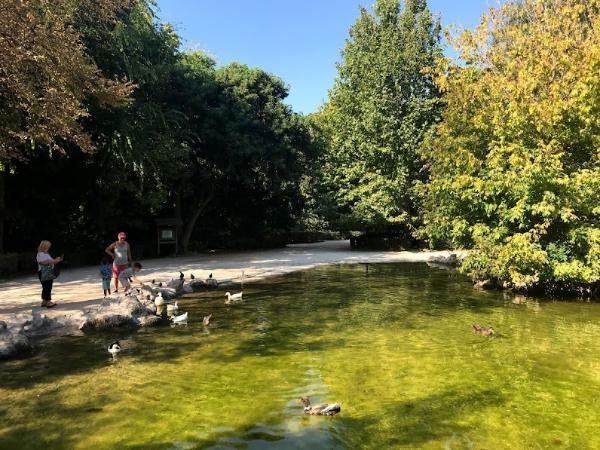
The National Garden also encompasses a few archeological ruins. The most distinguished of them is a mosaic floor belonging to a Roman mansion that was excavated during the construction of the park in the 19th century. It is located near the northern end of the garden. Another illustrious spectacle within the garden is the sundial; the first thing you see upon entering the park from its main entrance.

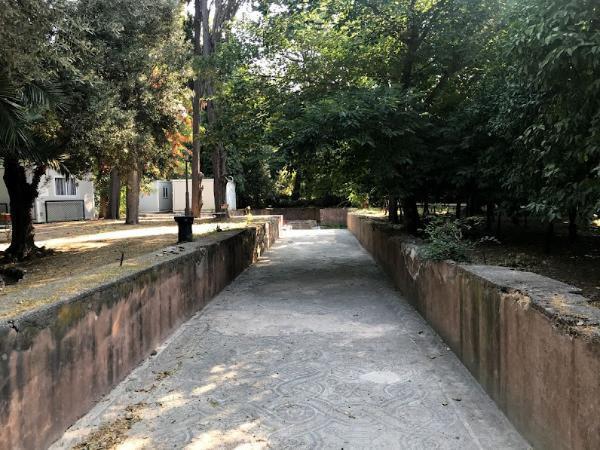
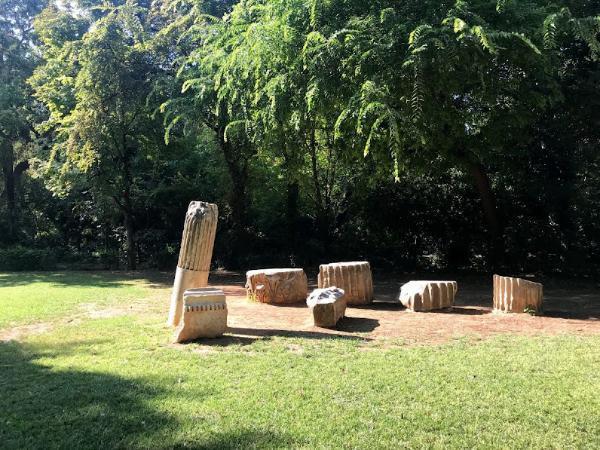
Other facilities in the National Garden are a botanical museum, a children’s library, and a small cafe.
Running in the National Garden
The National Garden is undoubtedly one of the favorite spots of the Athenian runners. It features about 7 km of paths one can use to run all-year-round. It is one of the few flat forested areas in the city of Athens, making it an ideal place for average-leveled joggers who want to avoid the strenuous runs of Athens’ hills. The deep vegetation guarantees the paths are well-shaded all day long and makes the garden a perfect running ground, especially in the summer when hiding from the sun is of utmost importance. The National Garden remains open to the public from sunrise to sunset.

National Garden Zoo & Turtles
The National Garden of Athens hosts a small zoological park that was established shortly after the garden’s foundation in the 19th century. The zoo is located near the eastern end of the garden, not far from the main pond. In the latest years, the zoo has fallen into negligence. The few remaining animals are kept under appalling conditions and voices have been urging for its complete dismantling. By the western end of the main pond, outside of the zoo ground, there also lies a teeny pond hosting a bale of small freshwater turtles.
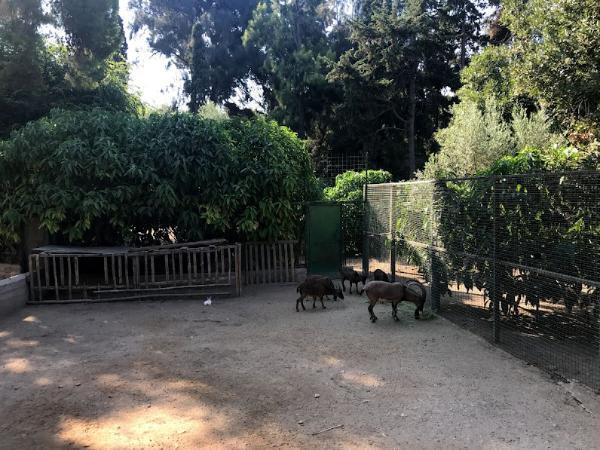
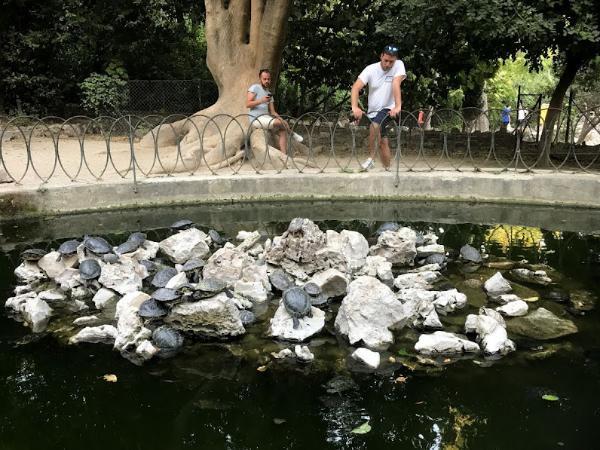
Hotels near the National Garden
Numerous hotels are located around the periphery of the National Garden of Athens. Here are some recommendations for a range of budgets:
High range: Hotel Grande Bretagne is one of the most acclaimed luxury hotels in Athens. Located in the heart of the city, right across the Greek Parliament and Syntagma Square. A 5-minute walk from the National Garden of Athens. Sumptuous environs, rooftop garden and restaurant, great views.
Middle range: Amalia Hotel is another upscale, yet more economical than Grande Bretagne, option. Situated right in front of the National Garden’s main entrance. Modern rooms with balconies overlooking the garden and Lycabettus Hill in the background.
Low range: Xenofontos Inn is an excellent inexpensive option in the vicinity of the National Garden. Located a 5-minute walk from the garden’s main entrance. Stylish environs, wide range of amenities, and exceptional service.
There are literally hundreds of additional options for accommodation near the National Garden of Athens. Explore them via the search widget below.
Accommodation and Activities in Athens
Stay22 is a handy tool that lets you search for and compare stays and experiences across multiple platforms on the same neat, interactive map. Hover over the listings to see the details. Click on the top-right settings icon to adjust your preferences; switch between hotels, experiences, or restaurants; and activate clever map overlays displaying information like transit lines or concentrations of sights. Click on the Show List button for the listings to appear in a list format. Booking via this map, I will be earning a small cut of the platform's profit without you being charged any extra penny. You will be thus greatly helping me to maintain and keep enriching this website. Thanks!
Restaurants near the National Garden
Some restaurants worth checking out:
National Garden Cafe
At the eastern end of the National Garden, entrance on Irdou Attikou Street, there is a little traditional Greek cafe. It is housed in a 19th-century stone house and has outdoor tables under an arched pergola entwined in ivies. A lovely place to enjoy a cup of Greek coffee.
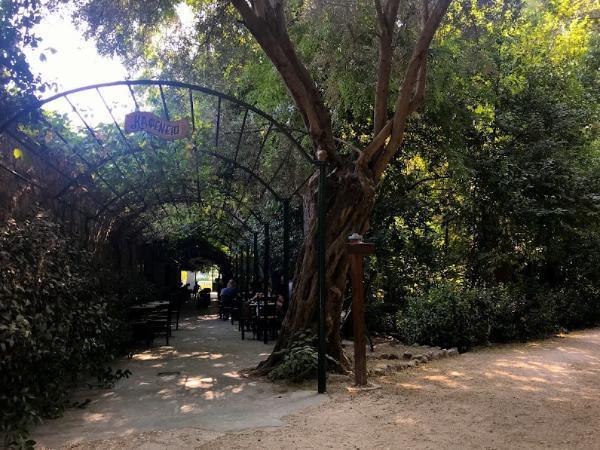
National Garden Map
Photo Gallery
View (and if you want use) all my photographs from the National Garden of Athens.
